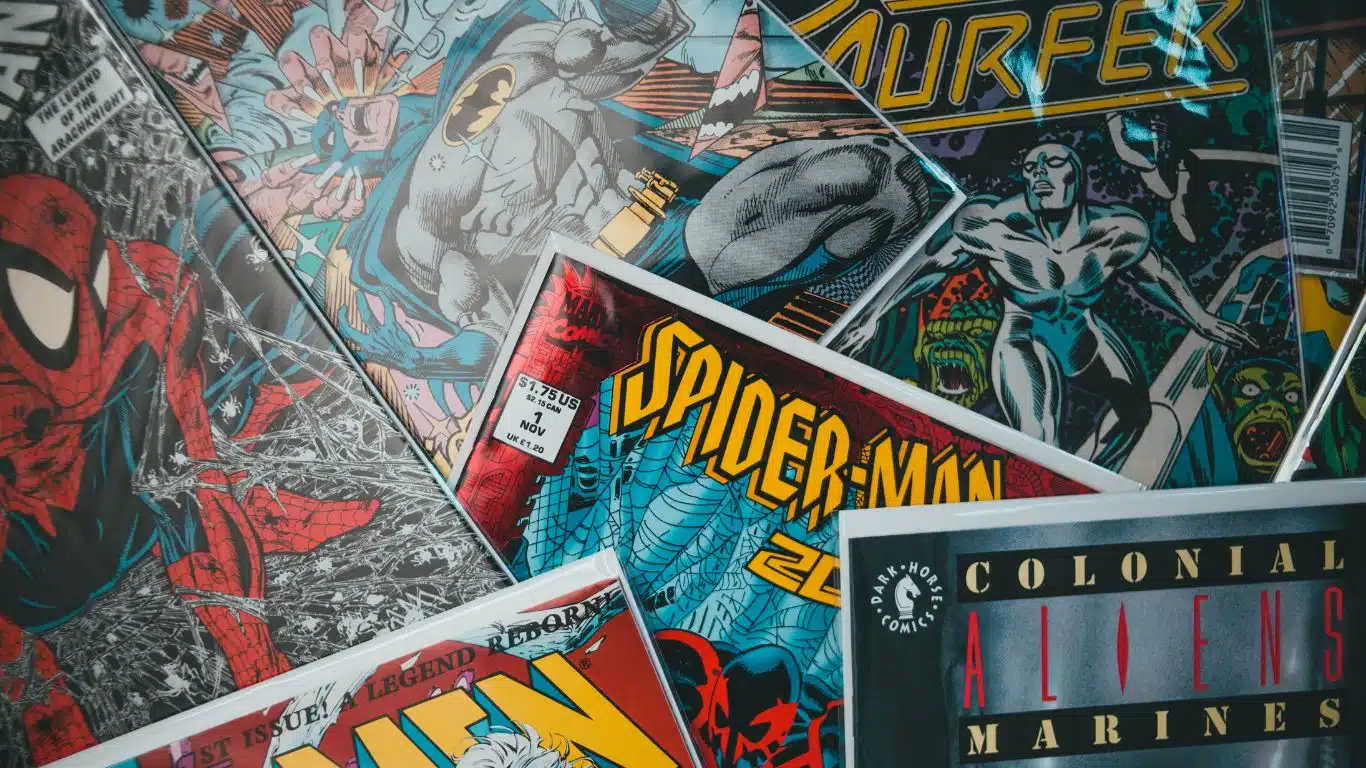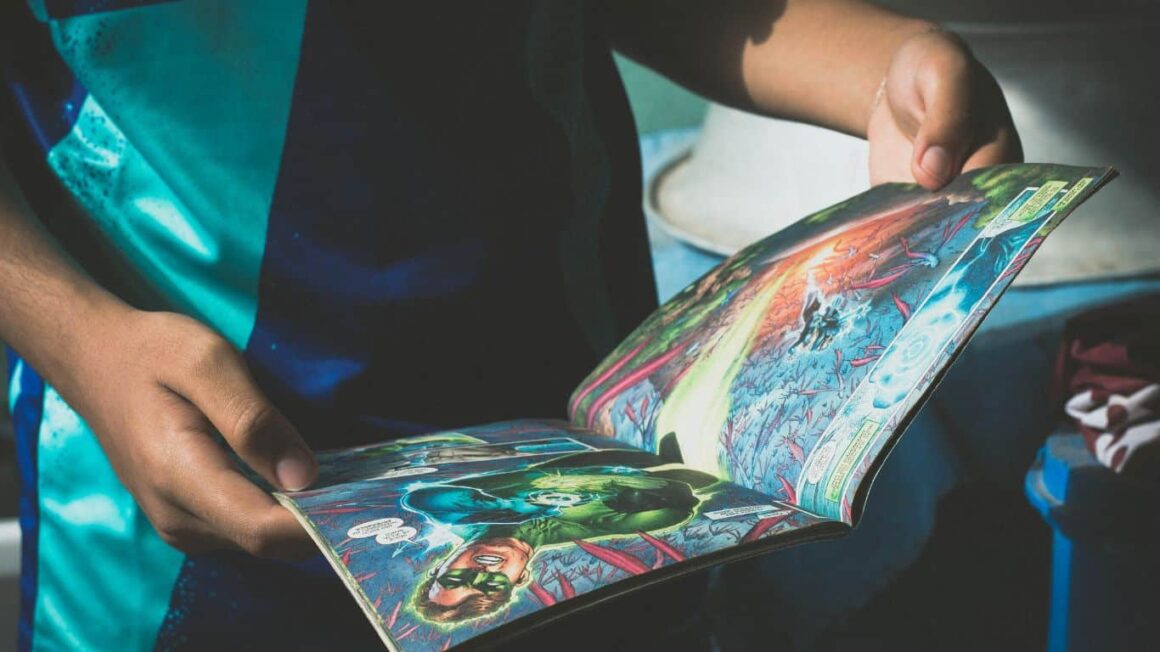How Comics are Printed: Comics have been a beloved form of storytelling for generations, capturing the hearts and minds of readers of all ages. But have you ever wondered how these colorful pages are created and printed? The process of creating and printing comics is a complex one, involving a variety of techniques and technologies. In this article, we will explore 10 different ways that comics are printed, including traditional offset printing, digital printing, screen printing, letterpress printing, and web printing. Each method has its own unique set of advantages and disadvantages, and is suited to different types of comics and audiences. Whether you’re a comic book creator, collector, or just a curious reader, understanding the different ways comics are printed can give you a deeper appreciation for the art and craft of comics.
How Comics are Printed – 10 Ways
Offset printing
In offset printing, the image to be printed is first transferred onto a plate, which is then used to transfer the ink onto a rubber blanket. The blanket then rolls the ink onto the paper, creating the final printed image. This method is often used for larger print runs and can produce high-quality images with consistent colors. It’s also more cost-effective for larger print runs.
Digital printing
Digital printing uses digital files, such as PDFs, to print comics directly onto the paper. Instead of using plates, like in offset printing, digital printing uses toner or inkjet technology to transfer the image onto the paper. This method is well suited for smaller print runs and allows for more flexibility in terms of customizing each individual copy. It also eliminates the need for plate-making and the associated costs. The turn-around time for digital printing is generally faster than offset printing. However, digital printing may not be able to match the print quality of offset printing for large print runs, and it also tends to be more expensive on a per-unit basis.

Screen printing
It is a technique where ink is pushed through a stencil, or “screen,” onto the paper. The stencil, which is typically made of a fine mesh, is placed on top of the paper and ink is pushed through the open areas of the stencil with a squeegee. The ink is then transferred onto the paper, creating the final printed image. This method is often used to print large areas of solid color, like backgrounds, and is well suited for printing on various materials like textiles, ceramics, and metals, not only paper. It’s also good for printing limited edition prints and posters. However, the setup process for screen printing can be time-consuming and it can be more expensive for small print runs.
Letterpress printing
Letterpress printing is a form of relief printing, where the image to be printed is raised above the surface of the plate. The plate is then inked and pressed onto the paper, transferring the ink from the raised areas of the plate onto the paper. The method uses a press, typically a hand-operated platen press or a cylinder press, to apply pressure and transfer the ink. This method was widely used in the past to print books, newspapers, and other forms of text, but it is now considered a niche technique and is mainly used for printing of limited edition art prints or special invitations and cards. The main characteristic of letter press printing is the impression left by the printing on the paper, giving it a tactile and visual depth.
Gravure printing
Gravure printing, also known as intaglio printing, is a method where an image is etched into a plate, typically made of copper or steel, and ink is transferred from the etched wells in the plate onto the paper. The plate is then coated with ink, and the excess ink is removed from the surface of the plate. The plate is then pressed onto the paper, transferring the ink from the wells in the plate onto the paper. This method is best suited for printing large areas of solid color, like backgrounds, and is often used for printing magazines, newspapers, packaging and other commercial printing applications. Gravure printing is known for its high-quality reproductions and ability to print on a variety of materials such as paper, plastic, and metal foils. However, it can be an expensive method to set up and run, especially for small print runs.

Flexography
Flexography, also known as “flexo,” is a type of relief printing that uses a flexible plate, typically made of rubber or polymer, to transfer ink onto the paper. The plate is first engraved with the image to be printed, then it’s inked and pressed onto the paper. The pressure of the press forces the ink out of the engraved areas and onto the paper, creating the final printed image. Flexography is widely used for printing on packaging materials, such as cardboard boxes, plastic bags, and labels, and it’s also used for printing newspapers, magazines, and other commercial printing applications. This method is well suited for printing on various materials and it’s known for its high-quality reproductions, it’s also cost-effective for large print runs and it’s fast and efficient. However, it may not be able to match the print quality of other methods, such as offset printing, for certain types of images.
Embossing
Embossing is a process where a die, which is a metal plate with a raised image, is used to press the image into the paper, creating a raised effect. The die is pressed onto the paper using a press, and the pressure of the press causes the paper to conform to the shape of the die, creating a raised image. This process is often used to add a decorative or tactile element to a printed piece, such as a business card, invitation, or book cover. It can also be used to create a sense of depth and dimension in an image. However, embossing can only be done on one side of the paper and it can only be done on certain types of paper, and the setup process for embossing can be time-consuming and it can be more expensive for small print runs.
Thermography
Thermography is a process where a special powder is added to wet ink, which is then heated to create a raised effect. The ink is printed onto the paper, and while it’s still wet, the powder is dusted onto the surface of the ink. The powder sticks to the wet ink and is then heated, causing it to melt and expand, creating a raised effect. This process is similar to embossing, but it can be done on both sides of the paper and it can be done on a wider variety of papers. It is often used for creating raised printing effects on business cards, invitations and other stationery items, but it’s also possible to use it for other types of printed materials. Thermography is a more affordable option than embossing and it can produce a more consistent raised effect, but it’s not as high quality as embossing.

Spot UV
Spot UV is a process where a clear ultraviolet (UV) coating is applied to certain areas of the comic, typically in a pattern or design, to create a glossy effect. The UV coating is applied using a special printing press that has the ability to selectively apply the coating only to certain areas of the comic. This process is often used to add a glossy or shiny effect to certain elements of the comic, such as images or text, to make them stand out and give them a more striking appearance. Spot UV can also be used to add a protective layer to certain areas of the comic, making them more resistant to wear and tear. However, it’s important to note that UV coatings can yellow over time, especially if exposed to sunlight, so it’s important to keep the comics in a cool and dark place.
Foil stamping
Foil stamping is a process where a metallic or pigment foil is applied to the comic using heat and pressure. A die is used to impress the foil onto the comic, which is then heated and pressed onto the comic. The heat activates an adhesive on the back of the foil and the pressure causes it to stick to the comic. This process is often used to add a metallic or shiny effect to certain elements of the comic, such as images or text, to make them stand out and give them a more striking appearance. Foil stamping can be used to create a wide variety of effects, such as holographic, matte, and gloss effects, depending on the type of foil used. It’s a way to create an elegant and high-end look in comics and other printed materials, but it can be a bit expensive and it’s not recommended for small print runs.
Also Read: Creating a Career in Comics: Tips and Tricks





